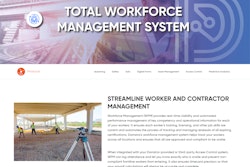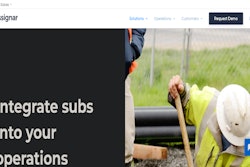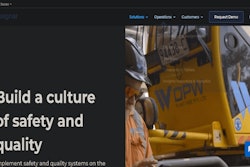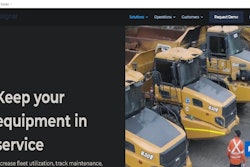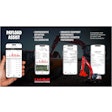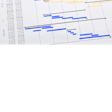
As technology comes in construction, it has to come not just for the front office, but for the field, enabling more intelligent and optimal management of workers and equipment involved in production while capturing productivity data for reporting and to support application for payment.
Founded in 2014, Assignar can be found in the Field Productivity Software category in IronPros and is another of what I consider a new breed of construction technology products, born in the cloud. The company had about 110 employees when IronPros debriefed CEO Sean McCreanor in March of 2022, but they are on track to grow substantially, with the United States being a top priority in addition to the Australia and New Zealand presences.
The current complement of employees is pretty evenly divided between technology-focused developers and people-focused sales and customer success, so they should be well equipped to do the hand-holding required as they grow the customer base even as they build new capabilities into the product. And while the product is all about digitizing operations in the field, by tying real-time insights from the field with business applications including construction enterprise resource planning (ERP) software, McCreanor said Assignar becomes a valuable weapon for managing cost and ensuring projects don’t get out over their skis on budget, timeline or cost versus revenue.
“Construction contractors generally are looking in the rearview mirror when it comes to financials, productivity and tracking what’s happening,” McCreanor said. “Everyone’s got a gut feel that they’re making money on this project or that they are very busy and heavily utilized. But now, we are able to show them that with right planning and with data, you can make smart decisions. You can look at utilization of equipment and make decisions on whether to buy or sell equipment. Do I need to train and upskill? Do I need to recruit more workers in certain skillsets because I just don’t have enough?”
This visibility not only supports better business decisions, but also eliminates the need to walk jobsites as often, freeing management up for other work. Assignar also eliminates headaches associated with construction scheduling and resource loading.
“Contractors often wonder—where are my equipment and workers, and how do I communicate with them?” McCreanor said. “Assignar gives them a streamlined approach to collecting data from the field from time sheets, job safety analyses and toolbox talks.
The software includes some functionality for equipment maintenance including reminders for scheduled maintenance tasks and capturing information on failures as they happen. Some customers will use Assignar for preventive maintenance while others have pre-existing enterprise asset management (EAM) or computerized maintenance management software (CMMS). Assignar is not a solution for tracking all of the factors that feed into a successful preventive maintenance program, like spares and repairs parts inventory, equipment warranties, fuel used, vibration, trouble codes or other data that would support predictive or condition-based maintenance. But it will establish the rhythm of service for the equipment and help enforce the provision of regular maintenance based on time periodicity, duty cycle, tasks and loads during those duty cycles and regulatory requirements. McCreanor said the company was also completing an integration with Caterpillar VisionLink for telematics real-time equipment data and was in discussions regarding an integration with Tenna for telematics data collection and maintenance management. Other integrations in place or in the works are with Komatsu’s Komtrax and potentially Samsara.
Because Assignar encompasses both the operations schedule for equipment and the maintenance schedule, project managers can more easily schedule maintenance around project demand or avoid scheduling a machine for production when it is in fact in the shop. Assignar can also expose equipment data on the type of work a piece of equipment is doing, so a contractor may notice they have a 90-ton crane that is regularly involved in jobs with much lighter picks, so they may want to grow the fleet with another 65-ton crane instead.
Digitizing construction crews and equipment
Assignar’s vision is compelling enough to draw significant venture funding—about $47 million including a $20 million series B round in November of 2021 lead by Fifth Wall, with participation from Holt Ventures, the venture capital arm of Holt Cat, the largest Caterpillar dealer in the United States.
With the geographic diversity to address a global market and a solid understanding of how helping self-performing contractors build more and waste less, you have a super strong value prop and a huge addressable market.
The software is built around three essential components—project planning and scheduling, resources including crews and equipment and then quantities and productivity tracking. From the ability to import data from estimates to build out a work order that consumes resources to reporting into front office tools for finance, invoicing and regulatory requirements, Assignar effectively connects the field to the front office in ways old school construction software just couldn’t. This eliminates non-value-added work and speeds up and improves the quality of data flowing into the front office from the site.
This is important because lacking this, it is hard to spot variances on projects quickly enough to take corrective action or identify bottlenecks between project requirements and available people and equipment resources. It is hard to ensure you are delivering profitable projects that meet customer expectations.
One helpful thing about Assignar is that it tracks the licenses, skills and certifications to ensure you are assigning the right people to a given task, in part for regulatory purposes. The software tracks competencies including expiration dates and date of issue. The rules Assignar follows when it comes to assigning workers based on this data are configurable. This data can be quickly added to an individual worker’s profile and the scheduling app will automatically only make them available for work when they are qualified and available.
Tickets in Assignar meanwhile capture both employee hours consumed, and equipment used. This is the tool used for daily logs, change order tickets or delivery tickets. These tickets are configurable and can be associated with the client, the project, an individual supervisor, a task or role a worker is assigned to or equipment a worker is assigned to. The ticket can also capture equipment downtime as part of the total hours recorded.
Across the application, you can collect crew and equipment data, record production achieved on site, safety, document things like equipment prestart checklists and toolbox talks, all feeding into an integrated business intelligence tool for visibility.
Assignar Tech Stack
Assignar is a born-in-the-cloud multi-tenant software-as-a-service (SaaS) application provisioned on Amazon Web Services including the DynamoDB database and Aurora, AWS’ version of MySQL and the Lambda serverless, event-driven compute environment. The application makes heavy use of the various utilities and tools that are part of the AWS tech stack. Assignar is built in Javascript from the front end to back end using the React Javascript library and the Node JS runtime environment which streamlines creation of scalable asynchronous applications that scale extremely well while minimizing use of system resources. Assignar publishes apps for both iOS and Android built in React Native.
This modern architecture means Assignar is not carrying technical debt—unlike software vendors that have both an on-premise and cloud version of their software or those with multiple acquired products at varying degrees of being rationalized into a coherent whole.
While Assignar is a fairly complete solution for management of crews and equipment in the field, it integrates with other back-office software to extend this visibility into work in progress into the managerial and executive teams. An integration with Trimble Quest estimating for instance enables a contractor to bid on and win a job and then push that schedule of values into Assignar for project planning and execution.
Other integrations include Salesforce for customer relationship management (CRM) and Acumatica for enterprise resource planning (ERP). For accounting, Assignar has integrated with Quickbooks, Sage 100 Contractor, Sage 300 Construction and Real Estate, Foundation and Australian accounting software vendors Xero and MYOB. Also on the roadmap at the time of our debriefing was a Sage Intacct Construction integration.
McCreanor said that the integration strategy and the rationale for their integrations is different when a contractor is running legacy solutions like Foundation, Sage 100 or Sage 300 than it is for ERP products born in the cloud like Acumatica or Intacct. For integrating with legacy solutions, Assignar relies on external systems integrators who can burrow into these older tech stacks that were not designed for easy integration. For other SaaS products, they create their own standard integrations.
“There are a lot of contractors running Sage 300 CRE, for instance,” McCreanor said. “They are not in a hurry to move off of their older software but are still all-in on making their transition to the cloud. But they are not starting with ERP—they are integrating Assignar to move operations to the cloud first and worry about ERP later. After all, a good-sized contractor may have 300 workers using Assignar but only about 10 using an ERP. But while most people think they will save most of their time with the integrations, but really, they save time by just digitizing their business.”
The other deliverable from these integrations is the ability to roundtrip performance timesheets, payroll and cost codes back with the estimate. In this fashion Assignar can give ERP users direct insight into the profitability of projects in real time.
Assignar pricing and market
McCreanor said the product is priced at three levels—basic, pro and advanced. After a discovery phase, an Assignar sales team will determine how many of the tiered modules or construction workflows a contractor would get the most value from and craft a plan accordingly.
Assignar then puts a new customer into one of a number of ranges of values depending on how many users they have in the software—25 50, 50 to 100, 100 to 150, and then arrives at pricing based on users and modules. Customers can move up or down in terms of the number of users at any time, which is important for contractors affected by seasonality or those that staff up for specific projects.
Horizontal contractors with as little as $10 million in revenue can likely find Assignar a fit for their businesses, but the tech is widely used among the self-performing divisions of multi-billion-dollar contractors worldwide—including the likes of Laing O’Rourke. But the sweet spot for Assignar is between $10 million and $250 million in revenue. The other factor that makes contractors a great fit for Assignar is the amount of equipment they own.
“Our customers tend to have a multi-million-dollar fleet of construction equipment that they own,” McCreanor said. “It could be anything—excavators, dozers, graders, it could be cranes, traffic controllers, F-150 trucks to take the concrete crews out to the jobsite. But we also qualify them by how committed they are to changing the way they are working with technology, because it is transformational for them. They are not just buying software and putting it in their business. There is a journey that you go on. We ask if they recently won any state, federal or city-funded projects where there are safety, quality and compliance requirements because we manage those workflows for them. And we look at management of the business—is there new management, is there succession planning going on, or are they just ready to change the way they are doing things.”
One thing that gives Assignar a leg up in reaching these heavy, highway and civil contractors is distribution help from their ERP partners as they get pulled into deals to complete a construction solution, co-selling and tag teaming implementations.
“Acumatica and Sage are both channel partners,” McCreanor said. “We sell through the Sage network—and some of those resellers have been around for 20 or 30 years and know the industry and the Sage solution.”
BOTTOM LINE: One of the main barriers to improving productivity in construction is the remote and anecdotal nature of how production is delivered in the field. Assignar is laser focused on closing this gap, enabling planning, execution and reporting of production put in place in a single, straightforward process. There are still areas where the solution can grow—the company has recently enhanced reporting and analytics and schedule and re-schedule workers based—all based on real time data. The company will need to contend with competition from OEMs like Caterpillar that has its own Cat Productivity software. Other players in the space include Raken, which has raised $12 million but may be about the same size in terms of boots on the ground, and the new EquipmentShare T3 platform. Suite application vendors like HCSS and Trimble Construction Cloud also address some of the same business processes and functions. Assignar partners with Sage, but that company launched its own Sage Field Operations product in partnership with Operix, formerly known as IFS Core. Assignar will want to keep investing in integrations to notch out field productivity functionality in the broader suites and grow functionality deeper into horizontal construction contracting operations to reliably win against direct competitors and continue its growth trajectory.
